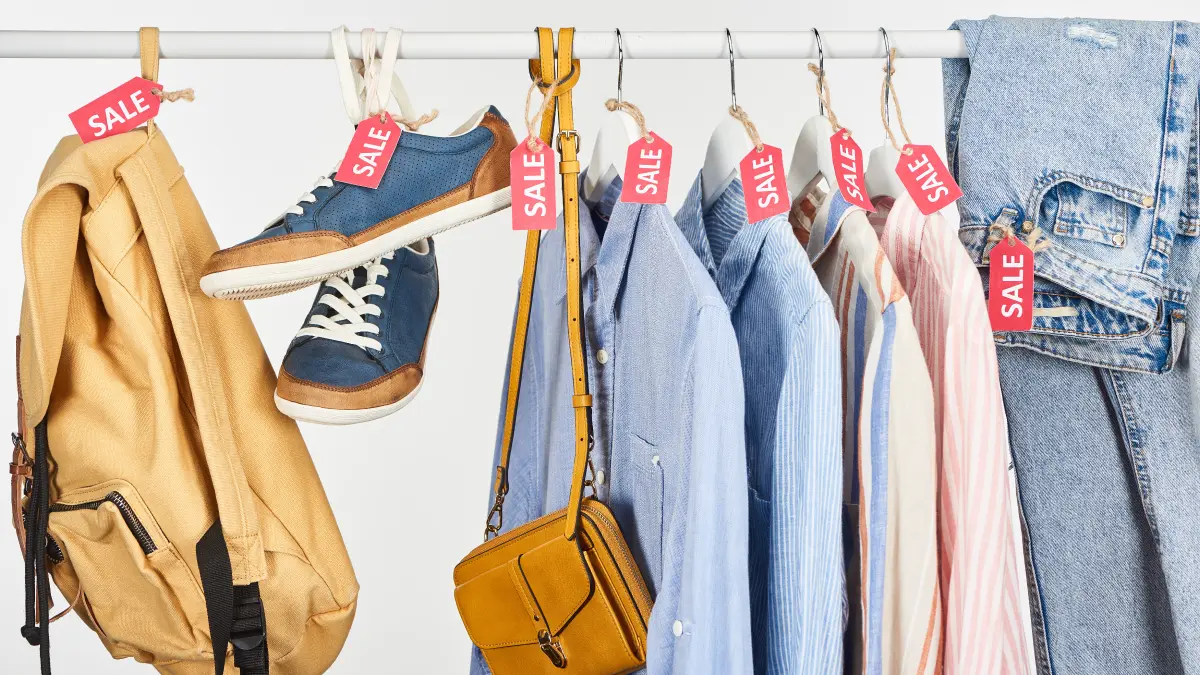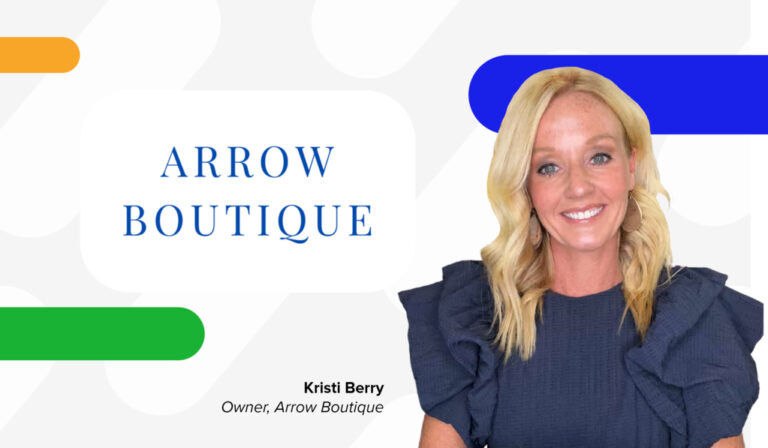Next to taxes, markdowns are one of the most dreaded parts of owning a boutique. However, they’re an inevitable part of doing business in retail. As much as we wish they weren’t, they’re not all bad.
Retail markdown strategies can have a positive impact on your boutique by rejuvenating cash flow, freeing up valuable space for fresh inventory, and renewing customers’ interest in older products.
If you’re ready to optimize your current markdown strategy or get started with one, use these considerations, tips, and techniques to make the best of your markdown planning.

Identify Reasons for Your Markdowns
Markdowns are used to reduce inventory with declining sales performance for less than the original selling price. The goal is to recoup some of your investment before it becomes dead stock. Markdowns can result from many reasons.
- Mistakes in overbuying
- Changes in seasonal trends
- Changes in weather conditions
- Consumer perceptions & demand
- Damaged or inferior goods
- Customer returns
- Retail competition
If you’ve encountered these, don’t despair. All are an inevitable part of retail. However, recurring patterns can spell danger for your business.
This is why creating an effective markdown plan is necessary. It will be the key to minimizing these risks while maximizing your margins.

Analyze Historical Data
Creating an effective markdown plan starts with analyzing your historical data first. By doing so, you’ll see what is working for your business and what needs improvement.
Take a look into the following metrics to gauge your current standing and create a plan for the future.
Inventory Aging
As much as we want to hold out hope that stale merchandise will sell for full price, it only depreciates over time, ties up cash, and takes away valuable space that could be used to store newer inventory.
An aged inventory report will show which brands, collections, and sizes have slow-moving inventory. Without this visibility, it could be too late to recover your initial investment. With it, you can gauge the rate of depreciation and act fast to diminish risk.
This report will show the total revenue made in the first 30 days, 60 days, and 90+ days. With it, you can drill down into items and SKUs in each category to identify products that warrant a price reduction.
Inventory Sell-Through
You cannot offer more fresh inventory until you sell through enough of your current stock. A sell-through rate will show you this information at a glance.
Sell-through rate is a percentage comparison of the amount of inventory a retailer bought from a vendor vs. what is actually sold to the customer.
Use a sell-through report to identify your suppliers, the quantity that you’ve purchased from them, the potential revenue, realized revenue, and sell-through percentage. These metrics are a great indicator of whether or not you’re making healthy investments in particular brands.
Markdown Timing
Is your markdown schedule effective? It is common industry practice for fashion apparel retailers to start price reduction at 30, 60, and 90 days during an item’s shelf life.
While this may vary from business to business, the aged inventory report can show the impact of your markdown strategy at these benchmarks. Evaluate these at the beginning, middle, and end of every sales season.
Gross Margins & Breakeven-Points
Markdown percentages should rely on the gross margin profit of the different categories and products you’ve assigned them to. This calculation will show whether or not your past markdown strategy helped you turn a profit on certain items, brands, or sizes.
Gross margin is a calculation of total payments received minus necessary expenses incurred in its sale. Sales tax, the cost of goods sold (COGS), and the cost of shipping are deducted from payments received to provide an accurate picture of your total profits from a particular category or product.
Use this to calculate your product’s break-even point. When sales are equal to expenses, you’ve reached a break-even point. After this point, you can no longer turn a profit on these items, so you will have to cut your losses.

Plan for the Next Selling Season
Don’t fly blind by slashing prices at the end of the season. Be proactive and make a strategy that aligns with your overarching financial plan. You don’t want to overinvest or underinvest in inventory the next time around. So what should you do to plan ahead?
Get an Inventory Budget
Overbuying is the #1 cause of profit loss in retail. Cut down on overbuying by using historical data to forecast trends and baseline sales for past seasons. Paired with a cash flow statement, you can keep inventory current and sellable while remaining within budget targets.
Inventory management software can give you a clue if you’re around these targets after you’ve entered your newly purchased inventory. It will automatically calculate potential revenue for you, which you can then compare to your cash flow statement.
Consider Pricing Strategy
Optimal markdown pricing is determined by assessing the margin impact of products. Strike a balance between analytics and buyer psychology for the best results. Charge too little, and you won’t earn enough to cover your expenses. Charge too much, and customers will go elsewhere to get those items.
How much can you expect to charge? The basic calculation for markup is simply the difference between the retail price and the cost of goods. This number is the bare minimum you will have to charge in order to cover overhead costs.
Ideally, you should also factor in any eventual markdowns that your products may need so you can reduce costs without completely deflating your return. There is no magic formula for this, as it depends on many conditions.
Again, use data to drive your decision-making. Pinpoint past buying trends, prices, and costs of different products and categories. Perform some market research and forecast demand. Use your best judgment to include fluctuations in demand and pricing.
Keep in mind, your customers will have to agree with your sales price. Would your customers pay for that? Average order value reports will reveal their current spending habits so that you can incorporate them into your pricing strategy.
Forecast Customer Demand
Waitlists, a queue for customers that are willing to wait for sold-out items, are an invaluable planning tool for inventory purchasing. Waitlists show you which items will guarantee you sales if you restock.
They can also reveal whether you should purchase deeper or wider. Added vs. waitlist report calculates of customers that successfully paid for items vs. the number of customers that were waitlisted after it sold out.
The optimal percentage for this is 70 added versus 30 waitlist. If you are not close to this, you may want to reconsider your purchasing plans.
Are you at 90/10? This ratio suggests that you might want to buy wider instead of deeper. Buying wider means purchasing a smaller quantity of a wider variety of items.
Are you at 10/90? You need to buy deeper. Buying deeper means you purchase more in quantity to meet demand!
It is okay for your customers to get waitlisted occasionally. It gives a sense of scarcity, which helps encourage your customers to make swift purchasing decisions.
However, if your customers are always getting waitlisted, it can lead to frustration. Watch this metric closely to provide the best brand experience.
The Takeaway
As the saying goes, the best defense is a good offense. Data helps benchmark trends and forecast sales and demand, so you can anticipate and prepare for inevitable markdowns.
Invest in technology your business can grow with because your markdown strategies will change over time. The right software will improve inventory control, optimize your sell-through rates, and help you move aged inventory quickly in creative ways.




